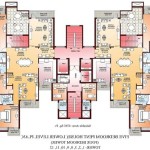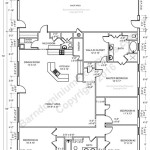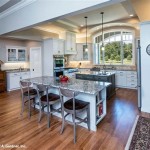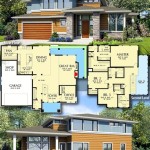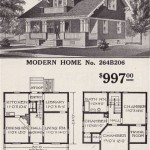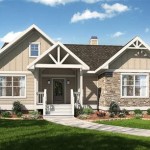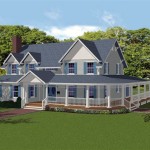Home Plans with Basement Floor Plans
A basement can be a valuable addition to any home, offering extra living space, storage solutions, and even the potential for a home theater or recreational area. When designing your dream home, incorporating a basement floor plan into your overall home plans can unlock a world of possibilities. This article will explore the various benefits and considerations associated with incorporating basement floor plans, providing insights into designing a functional and aesthetically pleasing space that complements your home's overall design.
Benefits of a Basement Floor Plan
A well-designed basement can offer a multitude of benefits, enhancing both functionality and living space within your home. Here are some key advantages of incorporating a basement floor plan into your home design:
1. Extra Living Space: Basements can provide an additional layer of living space, ideal for a variety of purposes. This could include a home office, a playroom for children, a guest bedroom, a home theater, or even a recreation room for entertaining. By finishing the basement, you effectively expand the usable square footage of your home, creating more room for your family's needs and hobbies.
2. Storage Solutions: Basements are naturally suited for storage, offering a dedicated area to organize and store items that might clutter up other living spaces. From seasonal decorations to tools and equipment, a well-planned basement can provide ample storage solutions, keeping your home tidy and organized.
3. Potential for Home Value Increase: A finished basement can increase the overall value of your home. By adding living space, bedrooms, or recreational areas, you enhance the home's marketability and appeal to potential buyers. A well-designed and finished basement can be a significant investment that pays off in the long run.
Designing a Functional Basement Floor Plan
When designing a basement floor plan, functionality is paramount. Consider the following key factors to ensure your basement meets your needs and complements your home's overall design:
1. Access and Entry Points: Determine how you will access the basement and ensure the entry point is convenient and safe. Consider the size and location of stairs, potential for a separate exterior entrance, and any necessary safety features like handrails or lighting.
2. Natural Light and Ventilation: While basements often have limited natural light, it's essential to maximize ventilation. Consider installing windows, skylights, or even a light well to bring in natural light and make the basement feel less confined. Proper ventilation is vital to ensure air quality and prevent moisture buildup.
3. Plumbing and Electrical Considerations: Plan for potential plumbing and electrical needs in your basement. This might include adding a bathroom, a kitchen area, or outlets for appliances and entertainment systems. Consider the location of these fixtures and ensure they comply with local building codes.
4. Insulation and Moisture Control: Basements are susceptible to moisture problems, so proper insulation and moisture control are essential. This includes using waterproof materials, ensuring proper drainage, and incorporating a dehumidifier if necessary.
Customization and Style
Once you have a functional basement floor plan in place, it's time to consider style and customization. This is your opportunity to create a space that reflects your personality and meets your specific needs.
1. Flooring: Choose a durable and moisture-resistant flooring option for your basement. This could include concrete, tile, laminate, or even engineered hardwood. Consider factors like traffic, moisture, and style when making your selection.
2. Wall Finishes: Walls in basements can be finished with paint, wallpaper, or even drywall to create a more polished and visually appealing space. Consider using light colors to enhance the feeling of space and brightness.
3. Lighting: Well-placed lighting is essential to create a comfortable and functional basement environment. Use a combination of overhead lighting, accent lights, and task lighting depending on your room's purpose.
4. Furniture and Decor: Choose furniture and decor that complements your basement's purpose and style. Consider incorporating comfortable seating, cabinetry for storage, and accessories that add personality and visual interest to the space.
Incorporating a basement floor plan into your home design can unlock a world of possibilities. From extra living space to dedicated storage and entertainment areas, a thoughtfully designed basement can enhance both functionality and style. By considering key factors like access, lighting, and moisture control, you can create a basement that seamlessly integrates with your home and offers a multitude of benefits for years to come.

Photos Of Plan 1117 The Clarkson Basement Floor Plans House

Stylish And Smart 2 Story House Plans With Basements Houseplans Blog Com

Hillside House Plan Modern Daylight Home Design With Basement

Don Gardner Walkout Basement House Plans Blog Eplans Com

Simple House Floor Plans 3 Bedroom 1 Story With Basement Home Design 1661 Sf Ranch

Versatile Spacious House Plans With Basements Houseplans Blog Com

Small Cottage Plan With Walkout Basement Floor

Basement Floor Plans Types Examples Considerations Cedreo

Four Bedroom Home Design With Office Plan 4968

Don Gardner Walkout Basement House Plans Blog Eplans Com

